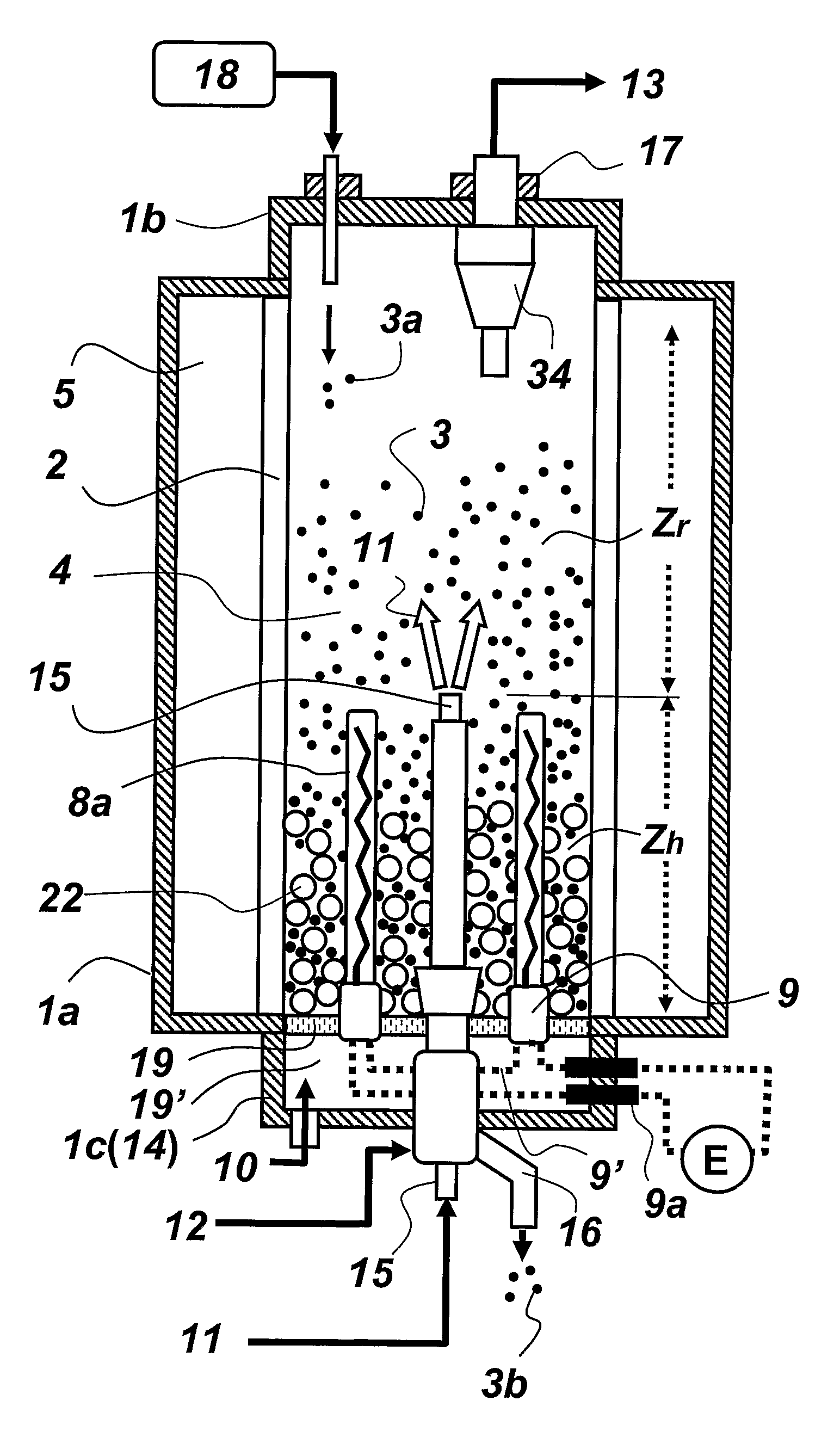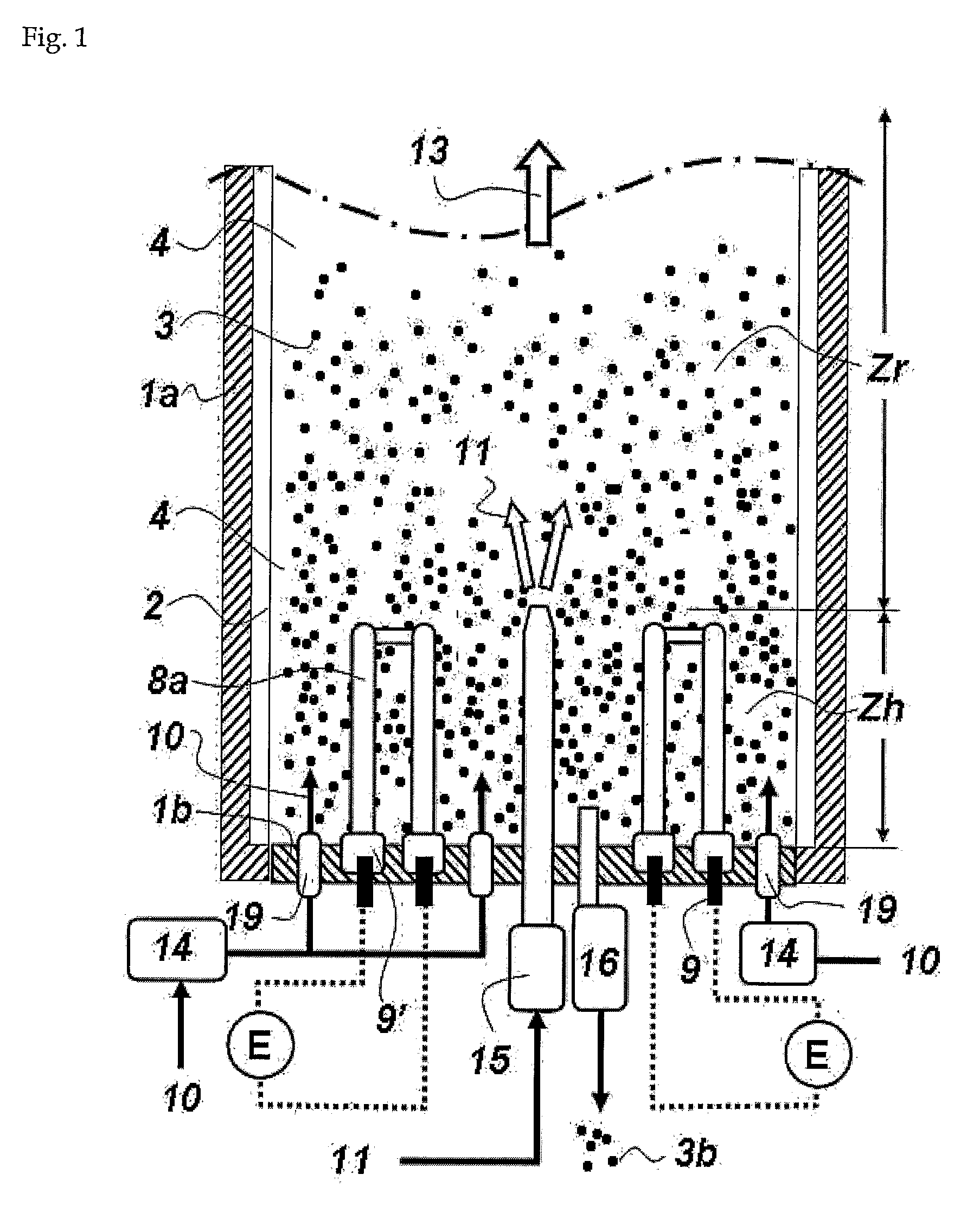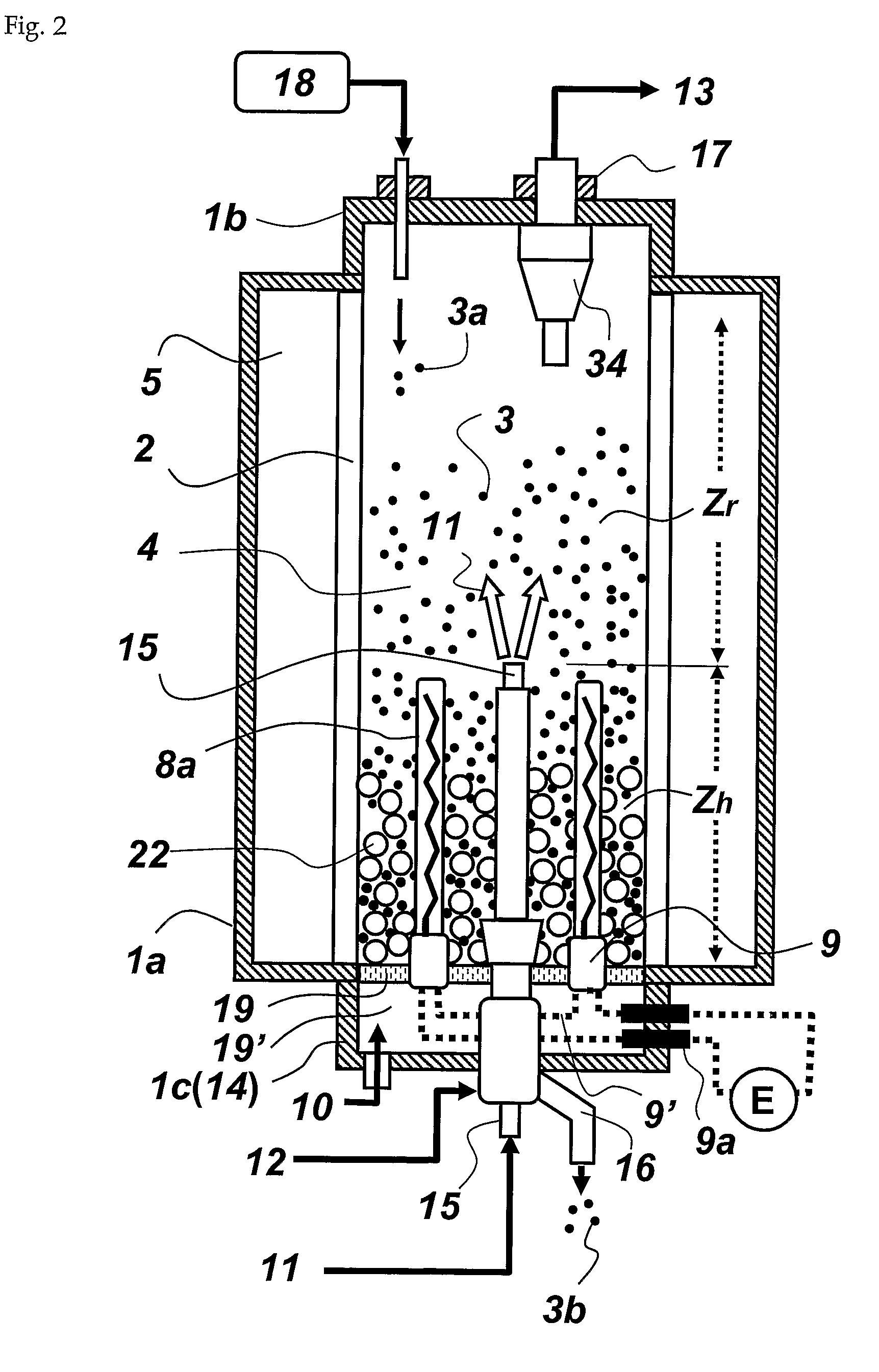Method and Apparatus for Preparation of Granular Polysilicon
- Summary
- Abstract
- Description
- Claims
- Application Information
AI Technical Summary
Benefits of technology
Problems solved by technology
Method used
Image
Examples
Embodiment Construction
[0030]In order to attain the aforementioned objective, the present invention provides a method for preparing polysilicon using a fluidized bed reactor, which comprises: forming a bed of silicon particles within a reactor tube, installed vertically within a reactor shell, on a fluidizing gas supplying means that supplies a fluidizing gas into the bed of silicon particles; setting up a reaction gas supplying means vertically within bed of silicon particles, so that a reaction gas outlet of the reaction gas supplying means can be located higher than a fluidizing gas outlet of the fluidizing gas supplying means; defining the upper and lower spaces in the reactor tube as a reaction zone and a heating zone, respectively, with the height of the reaction gas outlet being selected as the reference height; performing electrical resistance heating using an internal heater installed in a space in between the reaction gas supplying means and the inner wall of the reactor tube, thereby heating th...
PUM
| Property | Measurement | Unit |
|---|---|---|
| Temperature | aaaaa | aaaaa |
| Fraction | aaaaa | aaaaa |
| Thickness | aaaaa | aaaaa |
Abstract
Description
Claims
Application Information
 Login to View More
Login to View More - R&D
- Intellectual Property
- Life Sciences
- Materials
- Tech Scout
- Unparalleled Data Quality
- Higher Quality Content
- 60% Fewer Hallucinations
Browse by: Latest US Patents, China's latest patents, Technical Efficacy Thesaurus, Application Domain, Technology Topic, Popular Technical Reports.
© 2025 PatSnap. All rights reserved.Legal|Privacy policy|Modern Slavery Act Transparency Statement|Sitemap|About US| Contact US: help@patsnap.com



